Being part of the C3 Series, The Dogs of War shares most of the concepts used by its predecessor Less Than 60 Miles.
As I do not want to make these Designer’s Notes a cheap copy-and-paste of previous ones, I am jumping directly into the most intriguing aspects covered by this specific module.
For those interested in a broader overview of the system, I strongly suggest downloading the Less Than 60 Miles Extended Designer’s Notes available on TRLGames.com. I really think they are worth a look if you have never read them.
And remember to reserve a copy by writing to info@TRLGames.com! God save the Queen!
NATO and the BAOR Sector
The map depicts the Southern half of NORTHAG sector, referred to as “NORTHAG Sector 2” in the module. As each module had to cover an approximately equal area, a slice of CENTAG is also included. This brings in a real multi-national force composed by, from North to South:
- West German I Corps (NORTHAG), with two Panzer divisions and an additional Panzer brigade.
- British I Corps (NORTHAG), with three armored divisions.
- Belgian I Corps (NORTHAG), with one armored and one mechanized division.
- West German III Corps (CENTAG), with one Panzer Grenadier division.
Even when removing one West German division, assigned to NORTHAG strategic reserve, the sector looks more than well defended by a total of seven divisions, as NATO original plan clearly shows:
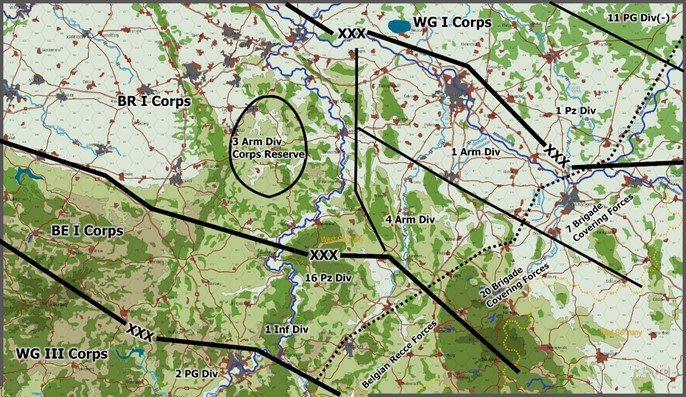
Unfortunately for NATO, the barracks deployment of the troops is very different. The forces immediately at hand amount to two divisions, plus four brigades from different formations. Moreover, most of the units in the area have little artillery support and are stationed up to 100 km behind the planned FEBA (Forward Edge of BAttle).
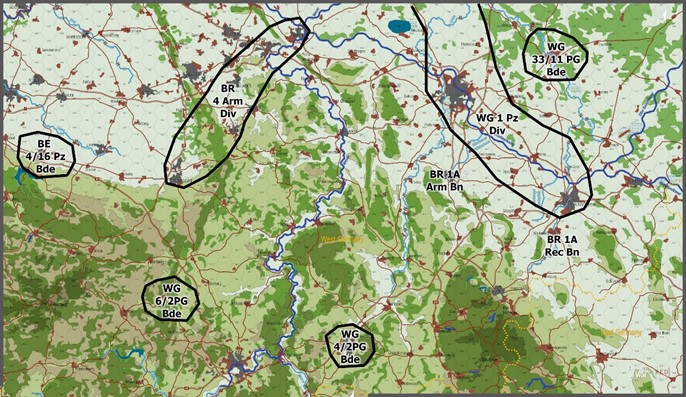
This uncomfortable difference has the following reasons:
- The two divisions from Belgian I Corps are near river Rhine or, well, in Belgium. Moreover, they both have two brigades only.
- British 1st Armoured Division is stationed North of BAOR sector.
- British 3rd Armoured Division is actually in the United Kingdom.
The bottom line is that, with little or no advance warning, NATO front would have had huge undefended gaps. Taking NATO off-guard would have been more important than ever.
Surprise Party
So, could Warsaw Pact have achieved a significant level of surprise? During development we had heated discussions about NATO reaction times, and two main schools of thought emerged:
-
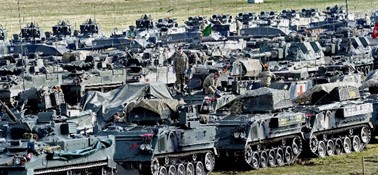 The “Well Oiled Machine” school, formed primarily by military personnel, claims that NATO would have had at least 48 hours of warning. The most probable scenario of this school has the following general development:
The “Well Oiled Machine” school, formed primarily by military personnel, claims that NATO would have had at least 48 hours of warning. The most probable scenario of this school has the following general development:-
At H-72, intelligence about an imminent Warsaw Pact attack is overwhelming. NATO political branch and national governments are briefed, and after quick consultations the Transfer of Authority to NATO is approved.
-
At H-48, NATO issues a SIMPLE ALERT order. Troops quickly assemble, vehicles are loaded and readied and in a few hours the units move into hides (assembly areas near the barracks).
- At H-24, NATO issues a GENERAL ALERT order. Units move to predefined battle positions, mobilization process starts, reinforcements begin to move out.
- At H+0, NATO is basically ready for the impact.
-
-
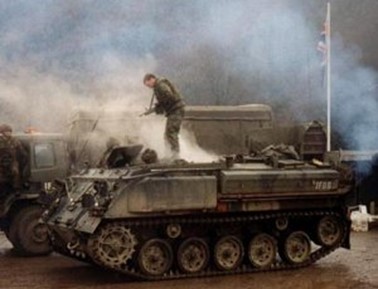 The “This Is Not a Drill” school, formed primarily by scholars and military consultants, claims that NATO warning could have been significantly less due to the different reactions to the threat, with the following most probable scenario:
The “This Is Not a Drill” school, formed primarily by scholars and military consultants, claims that NATO warning could have been significantly less due to the different reactions to the threat, with the following most probable scenario:-
At H-72, indications about an imminent Warsaw Pact attack are undeniable for any military expert. NATO political branch and national governments are briefed, but not everyone is convinced that war is unavoidable. Several key political figures demand for additional diplomatic attempts and ask to avoid provoking the Russians.
-
At H-60, direct talks with key members of the Politburo seems to indicate a Soviet desire to defuse the dangerous escalation. Some NATO countries suspect a Soviet Maskirovka and silently begin military preparations, no matter the official alert status.
- At H-48, intelligence about Soviet war preparations continue to accumulate despite the promising diplomatic talks with Moscow. Transfer of Authority to NATO is approved, with some countries still raising exceptions on important details.
- Between H-36 and H-24, NATO issues a SIMPLE ALERT order. No matter the country, preparing one million men and 50,000 vehicles at the same time takes longer than in a drill planned by months and involving only a few preannounced units: Key officers are on leave or missing, every vehicle must be fuelled and loaded, maintenance crews are overloaded, ammo distribution turns into a mess.
- At H-6, NATO issues a GENERAL ALERT order. Several units are actually still loading equipment and fuel, others have up to 25% personnel missing. Some formations start moving to combat positions.
- At H+12, with Warsaw Pact attack started, NATO countries begin to mobilize.
-
Most of the scenarios presented in The Dogs of War adhere to the “This Is Not a Drill” school, even though players have the possibility to change the default surprise level. As a fervid sustainer of this school, let me add more food for thought.
In the vast majority of modern conflicts, the vast majority of military claimed before the war that “it will be impossible for the enemy to take us by surprise, thanks to the development of Insert the Latest Incredible Technology Here and to our continuous exercise to keep the army always alert”. The Latest Incredible Technology could be any of the following: Telegraph, Radio, Aerial Reconnaissance, Radar, Satellites or Drones.
Despite all of the above, surprise at various levels almost invariably happened in every war. Some modern examples are Pearl Harbour, the German offensive in the Ardennes (two times!), the Chinese counteroffensive in Korea, the Yom Kippur war, the Tet Offensive in Vietnam, the Soviet invasion of Afghanistan, the Iraqi invasion of Kuwait.
The Kuwait invasion is a particularly interesting example to help understand that surprise is a generic term and does not necessarily imply that everyone is taken with his pants down. Before the invasion, CIA and military intelligence were well aware of what was probably going to happen and informed the political / executive branch. The problem is that the political branch decided to “defuse the situation” by sending ill-conceived and contradictory diplomatic signals to Saddam Hussein, while doing almost nothing from a military point of view. Essentially, the same course of action outlined for NATO by the “This Is Not a Drill” school.
The 1968 invasion of Czechoslovakia is even more revealing: By the end of July, NATO intelligence had identified between 20 and 40 Warsaw Pact divisions on the move, for a total of 500,000 troops and 5,000 tanks. On 18 August, all these units entered radio silence. On 20 August, Western radar coverage of Prague area was blanked out by artificial snow, and at the same time the whole Eastern Europe was covered by a dense layer of clouds, making spy satellites useless.
You are probably wondering what the NATO reaction to these worrying signals was. Well, SACEUR departed for an official visit to Greece on 18 August, two days before the invasion, and…that’s all. Nothing else happened on NATO side.
As David Miller wrote in his “The Cold War – A Military History”:
“Had [Warsaw Pact] simply kept moving and rolled across the Czechoslovak border into Federal Republic, NATO was in no position to have resisted.”
The British Army of the Rhine
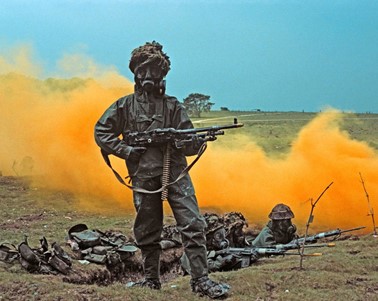 BAOR strengths and weaknesses have been examined down to the finest details, thanks to Anthony Morphet’s direct experience and meticulous approach. The final result is in my opinion a peculiar army with its own character, and not a simple list of counters and stats.
BAOR strengths and weaknesses have been examined down to the finest details, thanks to Anthony Morphet’s direct experience and meticulous approach. The final result is in my opinion a peculiar army with its own character, and not a simple list of counters and stats.
Dig, Then Dig Again
British Army loves to dig in, and every unit is well trained and equipped to do that quickly and autonomously. Consequently, the time and effort needed to build defensive works is considerably less than in other armies.
This allows a British formation to establish a reinforced defensive line quickly and with no additional burden on the command structure, forcing Warsaw Pact to attack as soon as possible or face strong dug-in positions.
Where’s the Ammo?
One of the most critical problems for BAOR has always been the scarcity of ammunition and the inadequate positioning and distribution system.
The ‘BAS/RARS’ study made in 1979 identified several BAOR logistic problems and ammunition shortages: its main conclusions were:
- The expected artillery ammunition usage should be doubled
- The expected artillery fire rate should increase by a factor of five
- Transport support is inadequate by a factor of three
- Almost 75% of the available lift capacity would be required to support Royal Artillery
- Vehicles load capacity and efficiency must be increased
A lot of money went into improving that in the mid 80s, but most of the problems were still there in 1985. One major continuing issue was that units had only 15-20% of their war ammunition in their garrisons – two days of fighting maximum. This could seem enough, but it actually means that after 24 hours you start worrying about when more ammo will arrive, and there are no available trucks in sight.
This should have getting better after three or four days, with the arrival of more logistics units from the Territorial Army bringing a 150% additional lift capacity.
In game terms, this translates into an insufficient initial resupply capacity, forcing BAOR Command to often relocate its scarce supply resources and choose which units are resupplied and which ones are not.
The Bundeswehr
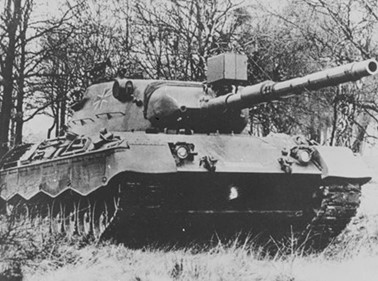 German armies are historically a tough enemy, and nothing made us think that 1985 would have been different. A more detailed representation of Heerestruktur IV organization and the introduction of Mission-Type orders make Bundeswehr as dangerous as it should be.
German armies are historically a tough enemy, and nothing made us think that 1985 would have been different. A more detailed representation of Heerestruktur IV organization and the introduction of Mission-Type orders make Bundeswehr as dangerous as it should be.
Heeresstruktur IV
The main objectives of the Heeresstruktur IV reorganization were to reinforce the brigade role as primary operational formation and give it more flexibility by increasing its component units. Considering this, West German formations have been revised and now mirror much better their actual 1985 organization.
The most interesting points are:
-
Teilaktiv (Mobilization) battalions are no longer automatically considered as mobilized at start and could require several hours before being able to move out and fight effectively.
- Each division now has its two mobilized Jägerbataillone represented, useful for protecting rear areas or key assets.
-
Artillery had its reorganization process still undergoing, by disbanding Corps-level artillery and assigning the tubes to each division. The resulting divisional artillery usually had three separate battalions: one FH-70 unit, one M110A2 unit and one LARS unit, with the exact composition and number of tubes varying for each division.
- DM-711 minelet dispensing rockets for LARS artillery battalions are now taken into account, making LARS extremely effective when used for interdiction fire.
Auftragstaktik
Mission-Type orders have been one of the cornerstones of German military tradition since 19th Century. The basic concept is that an order must give to subordinates enough information to fully understand the objective of the commander, without interfering in their autonomy to organize the details of its execution. This allows the subordinates to act or react independently to unexpected events or military contingencies, as long as they’re moving within the general framework outlined by the commander’s orders.
In game terms, West German units can autonomously change their tactical deployment without adverse effects, even when out of the Command Range of their Headquarters.
In the 80s, Mission-Type orders were gaining ground in the British and US Army too, but we decided it was still too early to consider it a working and consolidated practice, as it requires a deep change of mentality. Therefore, they are limited to Bundeswehr only.
The Belgian Army
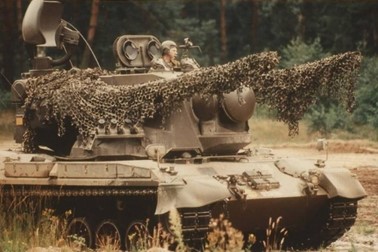 With short-term conscripts, some obsolescent equipment and lack of spare parts and ammunition, the 1985 Belgian Army was not in the best shape to face a Soviet assault.
With short-term conscripts, some obsolescent equipment and lack of spare parts and ammunition, the 1985 Belgian Army was not in the best shape to face a Soviet assault.
An additional problem was the peacetime deployment of the two Belgian I Corps divisions, assigned to link with BAOR Southern flank in wartime: 1er
Infanterie Division was completely located in Belgium, at 300 km distance from its assigned sector, while 16de Pantser Division had its brigades approximately near Dortmund, still 100 km away from its Battle Area.
To make things worse, both divisions have only two brigades. Two additional brigades would have been mobilized in wartime, but they would have needed additional training before having any combat value. Their estimated arrival time is around D+15, placing them outside the time frame of The Dogs of War.
A positive note comes from the three recce battalions of the Corps, having better training and in some cases better equipment.
Nice bit of info. Sadly I’ll still pass on the game, but will definitely follow conversations.
!:)
This analysis of the differing characteristics and readiness of the various combatant nations is exactly what makes games great. I’m long past tolerating games where every armored unit is rated the same in movement attack and defense strength and no C3 limitations. The granularity makes it much more realistic.
Also, the HQ pukes and staff weenies rely on their intel analysis but your “positive progress in negotiations” and “don’t want to deploy and scare the Soviets” and “cool heads must prevail” will likely add to success of their skillful maskirovka measures. I think the “This is no drill” timeline might be too optimistic.
I agree, my personal worst case scenario for NATO is one where the units are still in the barracks, with few exceptions. The game includes that possibility for particularly bold NATO commanders
If I had a nickel for every time we talked about that sort of thing in Korea over the last 20-ish years …
Do the maps dit together with LT60M?
Yep! There’s a picture of the combined map on our official FB page:
https://www.facebook.com/TRLGames/photos/a.484506968722581/994858994354040
yes. see TRLgames.com